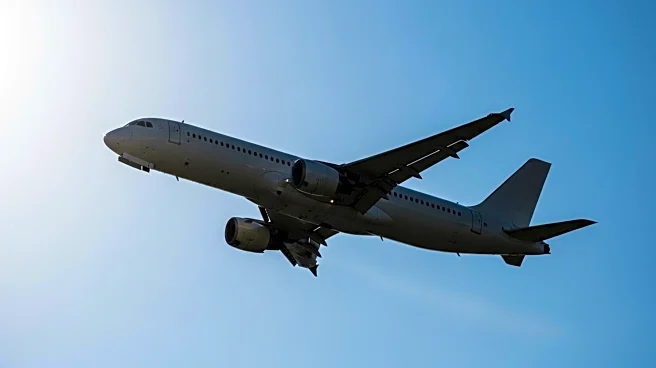What is the story about?
What's Happening?
Air New Zealand has unveiled a detailed market report for the Summer 2025/26 season, providing an in-depth analysis of its current market position, future opportunities, and challenges. The report, produced by Aero South Pacific, covers various aspects of the airline's operations, including its fleet, network, and financial performance. Air New Zealand operates 115 aircraft and serves 48 cities across 17 countries, playing a crucial role in New Zealand's economy and international connectivity. The report highlights the airline's strategic direction, organizational structure, and financial forecasts, offering insights into its operational strategies and market dynamics. Despite reporting an after-tax profit of NZD126 million for the year ending June 30, 2025, Air New Zealand faces operational constraints due to manufacturing issues with Rolls Royce Trent 1000 and Pratt & Whitney 1000G engines, affecting up to 11 of its 60 jet aircraft.
Why It's Important?
The release of Air New Zealand's market report is significant for stakeholders in the aviation industry, including investors, analysts, and competitors. It provides valuable data on the airline's strategic direction and operational challenges, which are crucial for assessing risk and opportunity in the sector. The report's insights into fleet management and network operations can inform investment decisions and competitive strategies. Additionally, the operational constraints due to engine manufacturing issues highlight broader challenges faced by airlines globally, impacting service delivery and profitability. Understanding these dynamics is essential for stakeholders aiming to navigate the complexities of the aviation market.
What's Next?
Air New Zealand's strategic focus will likely involve addressing the operational constraints caused by engine manufacturing issues, which are affecting its fleet availability and profitability. The airline may explore solutions to mitigate these challenges, such as negotiating with engine manufacturers or adjusting its fleet management strategies. Stakeholders, including investors and competitors, will be closely monitoring Air New Zealand's actions to address these issues and their impact on the airline's market position. Additionally, the insights from the market report may influence strategic decisions and investments in the aviation sector, as stakeholders seek to leverage the data for competitive advantage.
Beyond the Headlines
The operational challenges faced by Air New Zealand due to engine manufacturing issues underscore the broader implications for the aviation industry, including the importance of reliable supply chains and technological advancements in aircraft manufacturing. These challenges may prompt airlines to reconsider their fleet strategies and partnerships with manufacturers, potentially leading to shifts in industry dynamics. Furthermore, the report's emphasis on strategic opportunities highlights the evolving landscape of international connectivity and tourism, with Air New Zealand playing a pivotal role in linking New Zealand to global markets. This underscores the airline's significance in shaping economic and cultural exchanges.
AI Generated Content
Do you find this article useful?














